It’s apparently quite common for people to leave North Dakota as the last of their 50 states to visit. If that’s you and you’re struggling to find a reason to visit ND, here’s a suggestion – visit the western side of the state in order to check out Theodore Roosevelt National Park.
It’s a beautiful park, reminiscent of Badlands National Park in South Dakota, with lots of scenic views and an abundance of wildlife. Shae and I spent about 7 hours exploring the park and had a wonderful time.
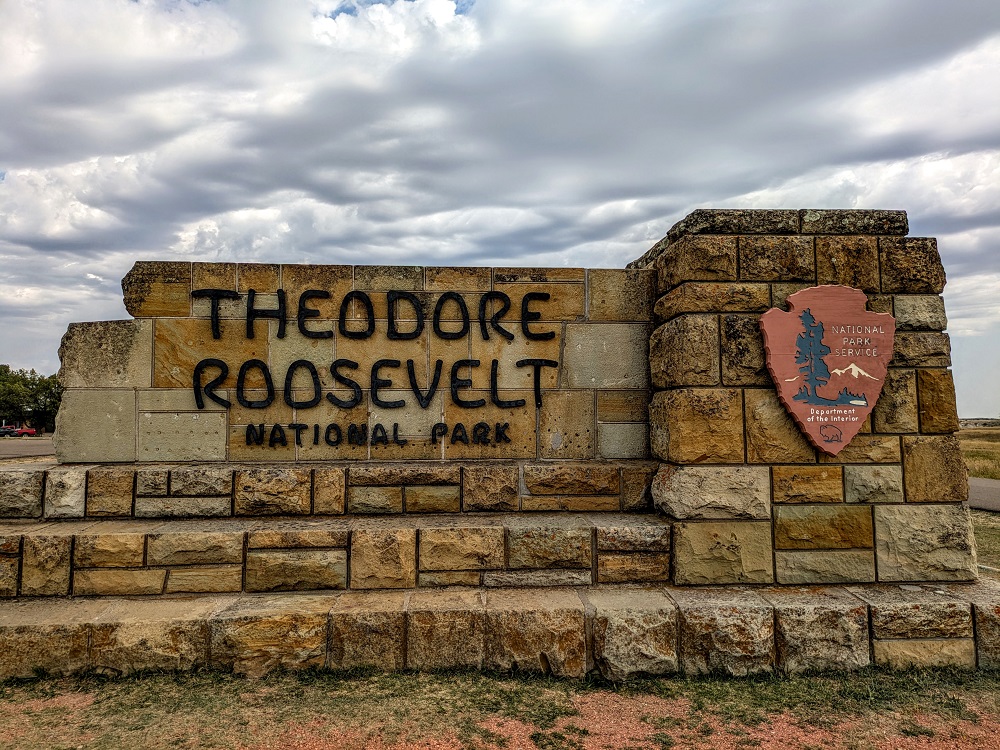
South Unit
Theodore Roosevelt National Park is split into three units – the South Unit, North Unit and Elkhorn Ranch Unit. The park is massive, covering more than 70,000 acres, so we focused our time on the South and North Units.
Seeing as we were staying in Dickinson, we started off at the South Unit as that’s the one that was closest by. We began by visiting Painted Canyon where there’s a visitor center.
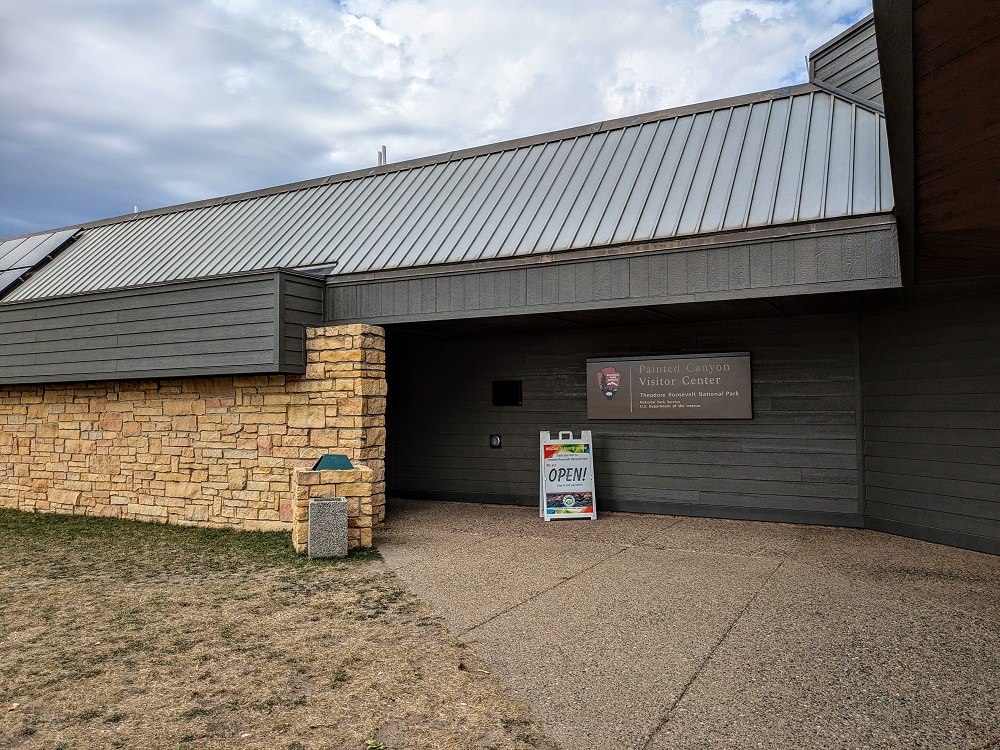
While Shae went inside to check out the visitor center, I waited outside with our dog Truffles and read some of the information boards out there.
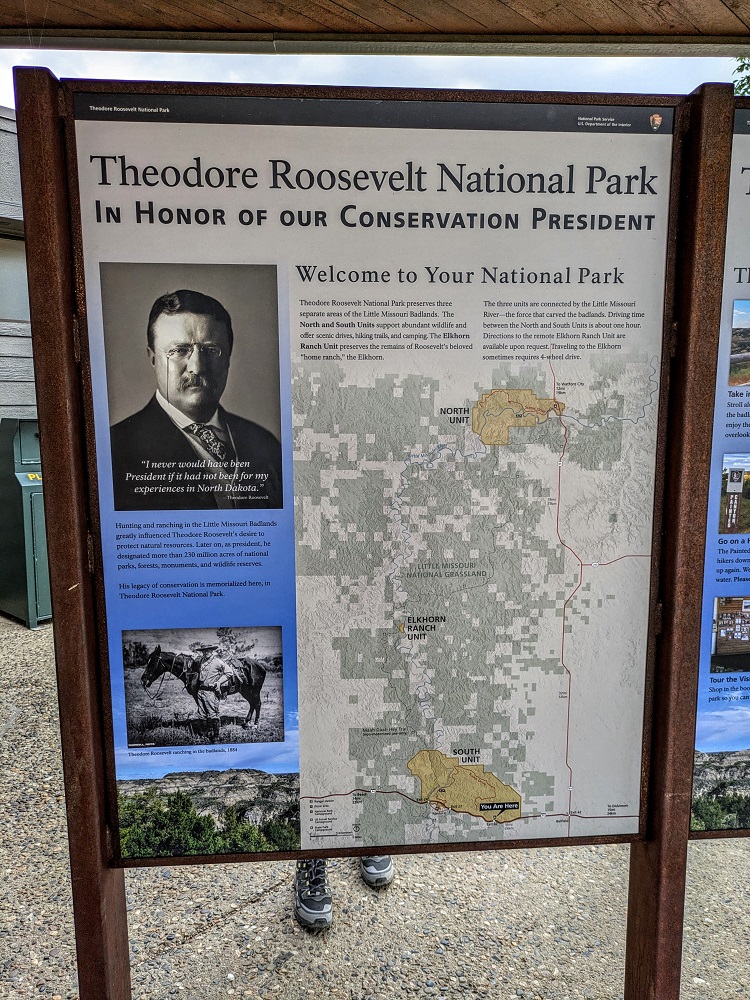
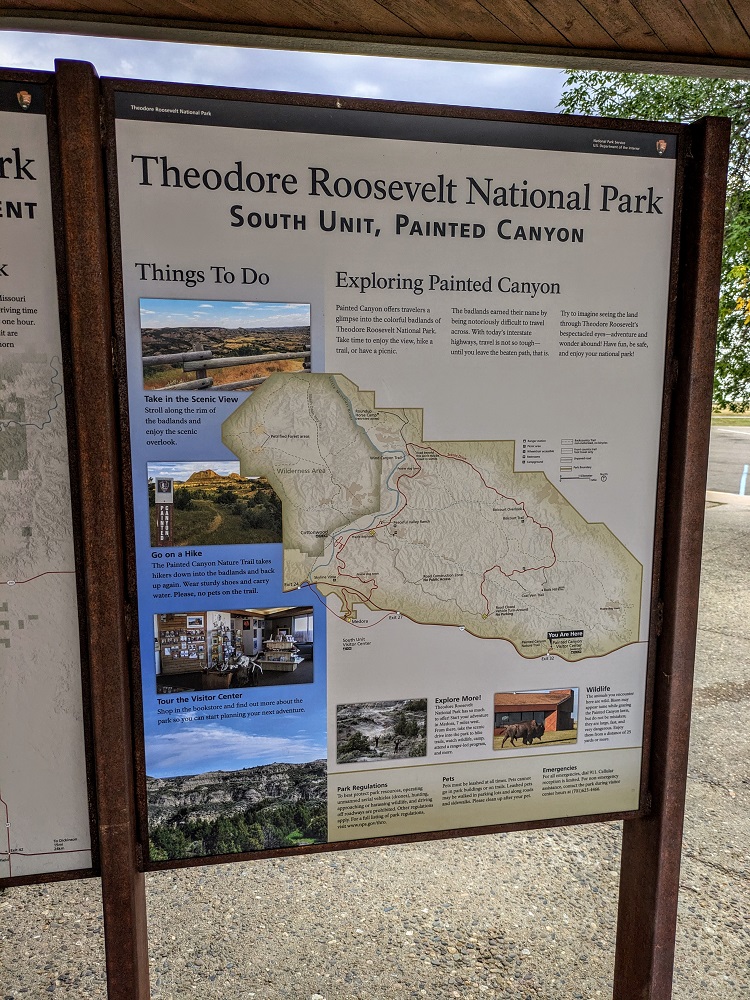
National Parks don’t tend to be very pet-friendly as dogs aren’t normally allowed on any hiking trails, instead being restricted to campgrounds, paved roads, etc. Generally, anywhere your car can go, your dog can go also.
Theodore Roosevelt National Park is no exception for the most part, although dogs are allowed on the sidewalk at the Painted Canyon visitor center which provides some excellent views of the badlands.
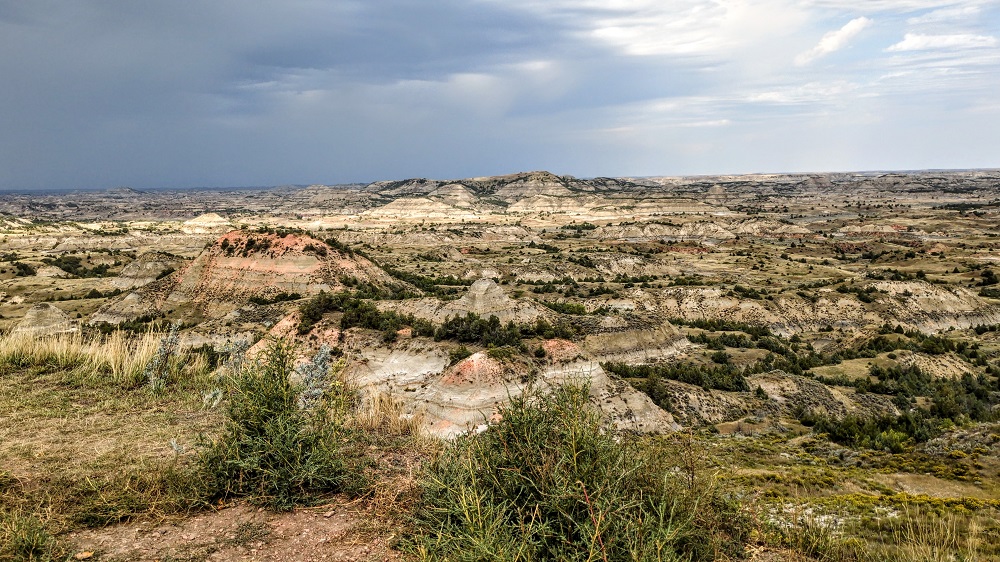
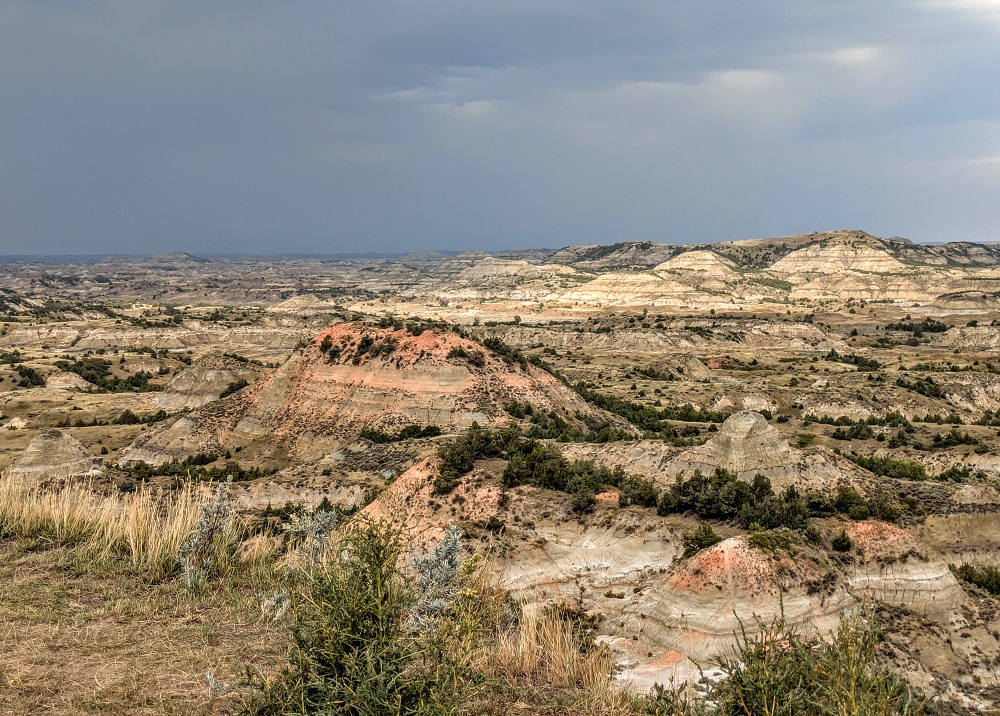
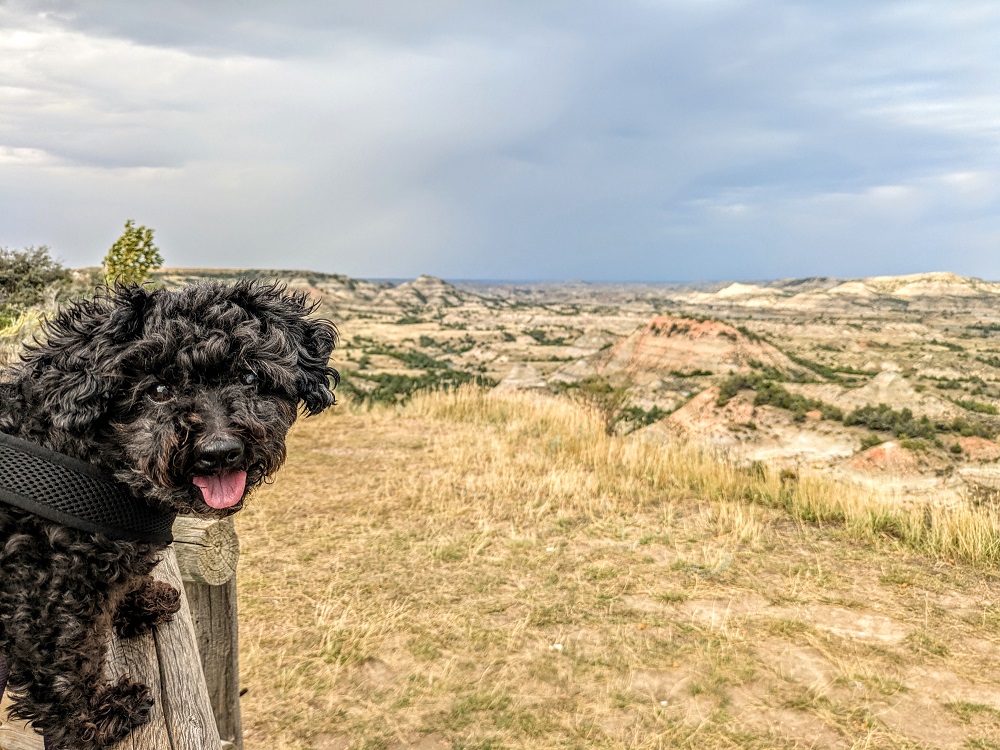
There’s a 0.9 mile loop nature trail off to the side. Dogs aren’t allowed on there, but seeing as it’s relatively short Shae and I could’ve taken it in turns to walk it quickly. However, there was lightning in the distance and so we decided to get going just in case the weather took a turn for the worse.
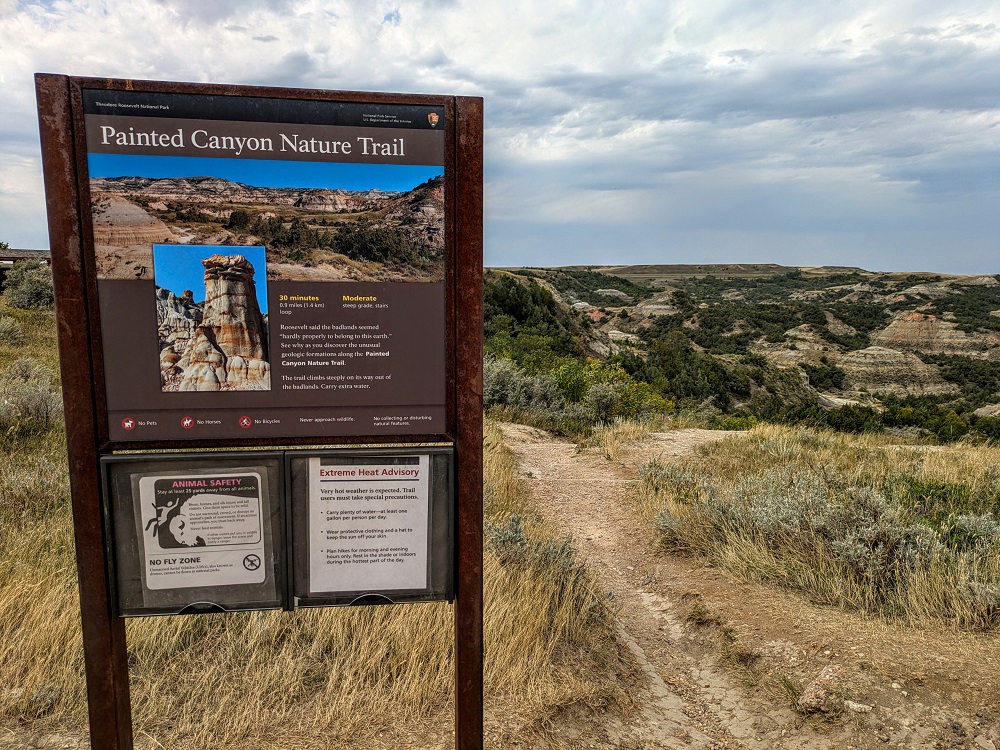
If you’re into hiking and are travelling with a dog, you don’t have to go far for some pet-friendly trails. We didn’t hike any of it during our few days in Dickinson, but the Maah Daah Hey Trail covers ~150 miles and is mostly pet-friendly. There are some sections of the trail that are inside the National Park and so pups aren’t allowed on those parts, but the rest is dog-friendly. Be sure to check out Airstream Dog’s post about it as it was that post that initially inspired us to want to visit the western side of North Dakota.
After leaving Painted Canyon, we drove about ten minutes west to downtown Medora. That’s home to the Medora Musical which a couple of people had recommended to us, but we arrived a week or two after the end of its performance season and so didn’t have a chance to attend.
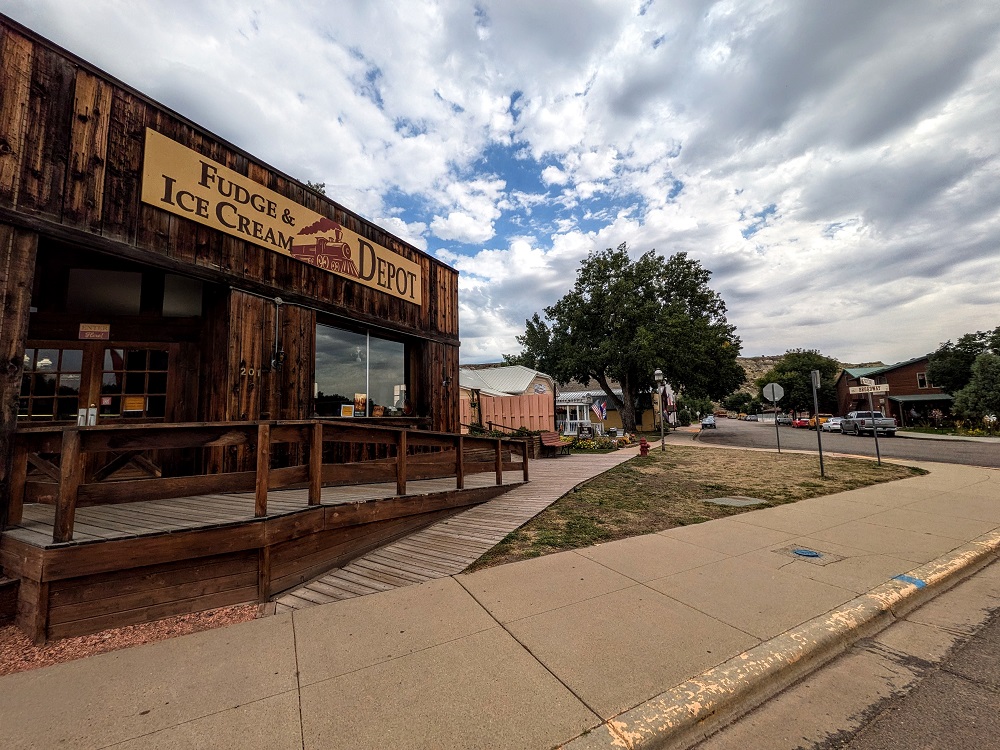
We stopped in Medora for a few reasons though. One was because we’d heard the downtown area was cute; it did seem to be, but we didn’t spend much time walking around due to the threat of bad weather potentially impacting our visit.
Another is that Medora was likely the last place we’d see a gas station for some time, so we filled up seeing as we’d be putting quite a few miles on our car that day driving around the South Unit, up to the North Unit and then back down to Dickinson.
The third reason was that Medora is home to the South Unit visitor center.

I waited outside with Truffles again, trying to cajole her into having some lunch as we’d be spending much of the rest of the day in the car. Shae meanwhile went inside to get our National Park passport stamped…
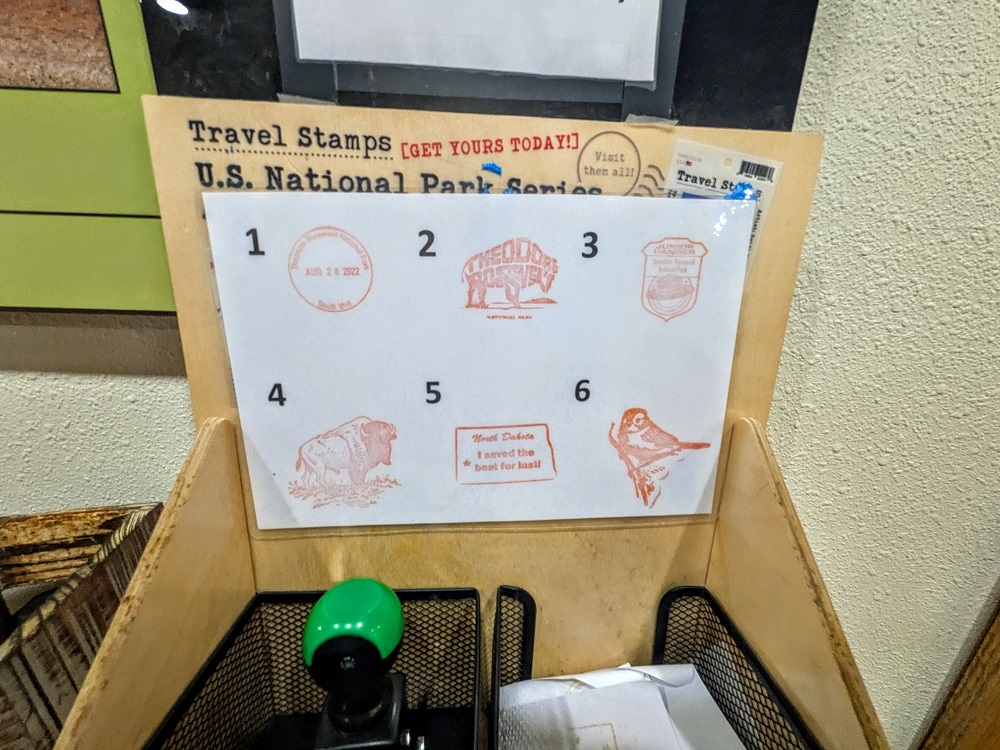
…and to walk around its exhibits.
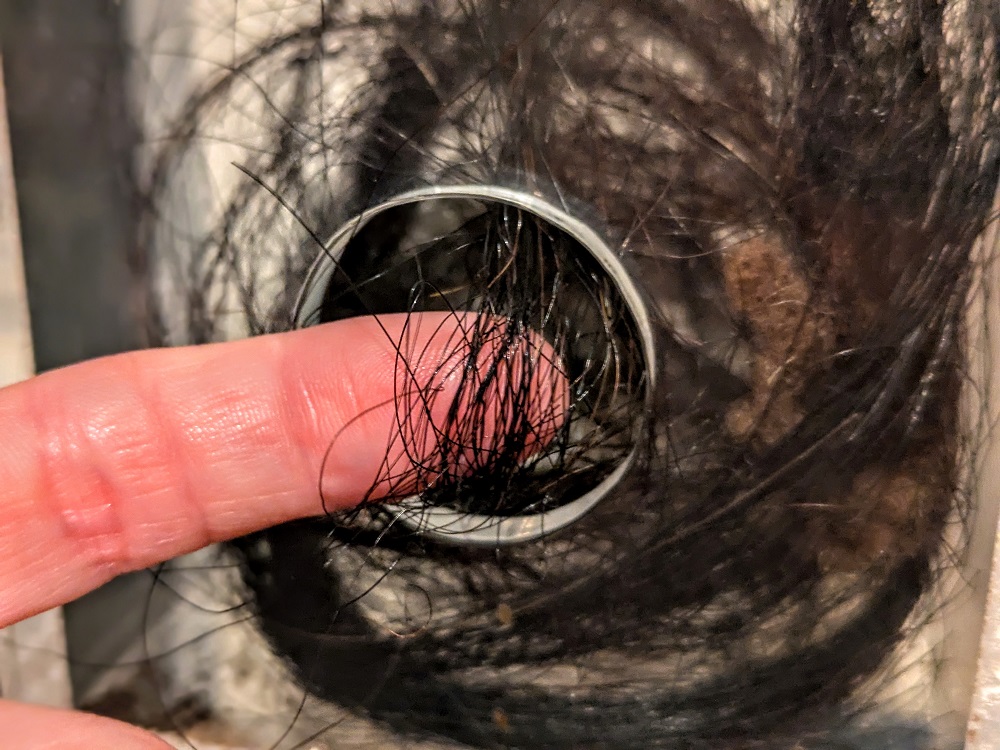
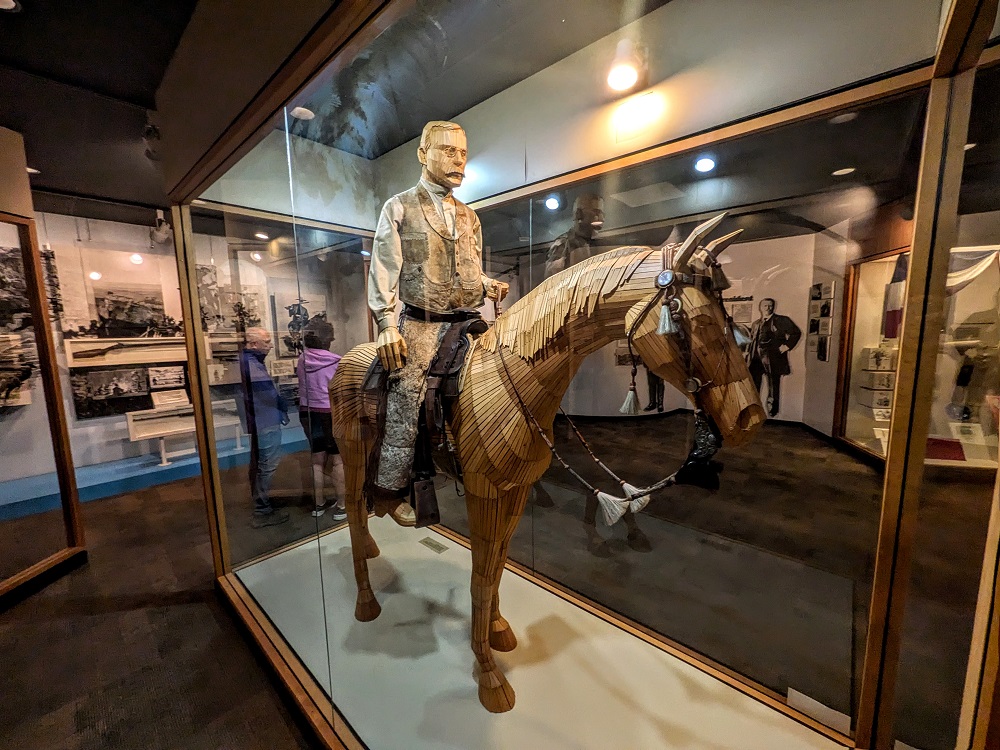
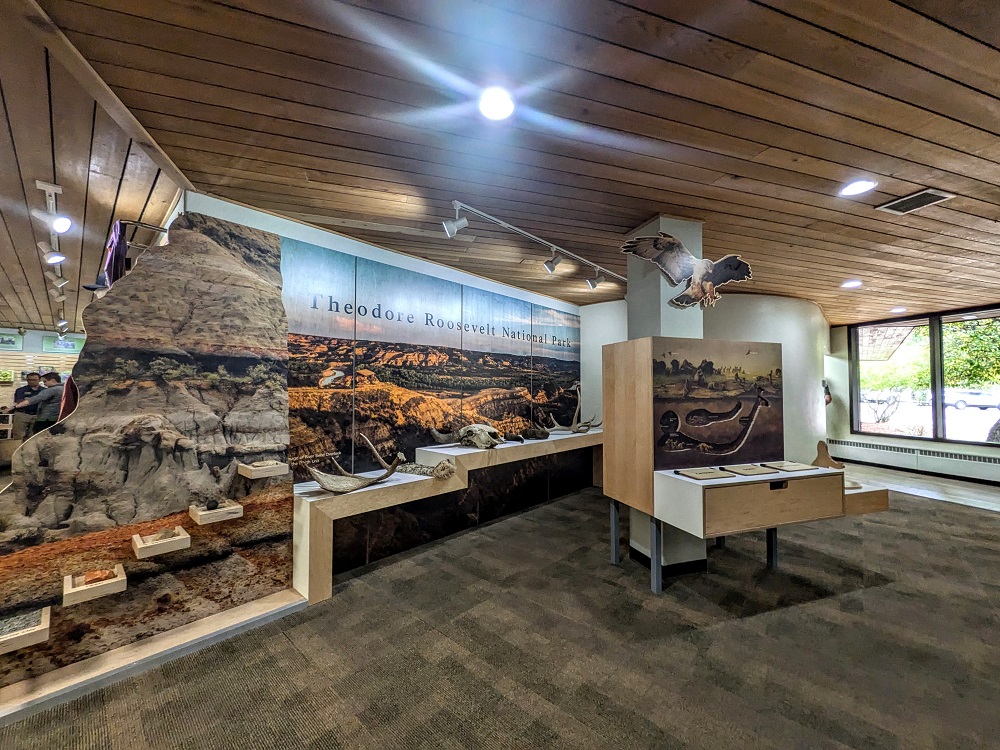
After stopping by the visitor center, we started driving through the South Unit, heading north on East River Rd and then east on Scenic Loop Rd.
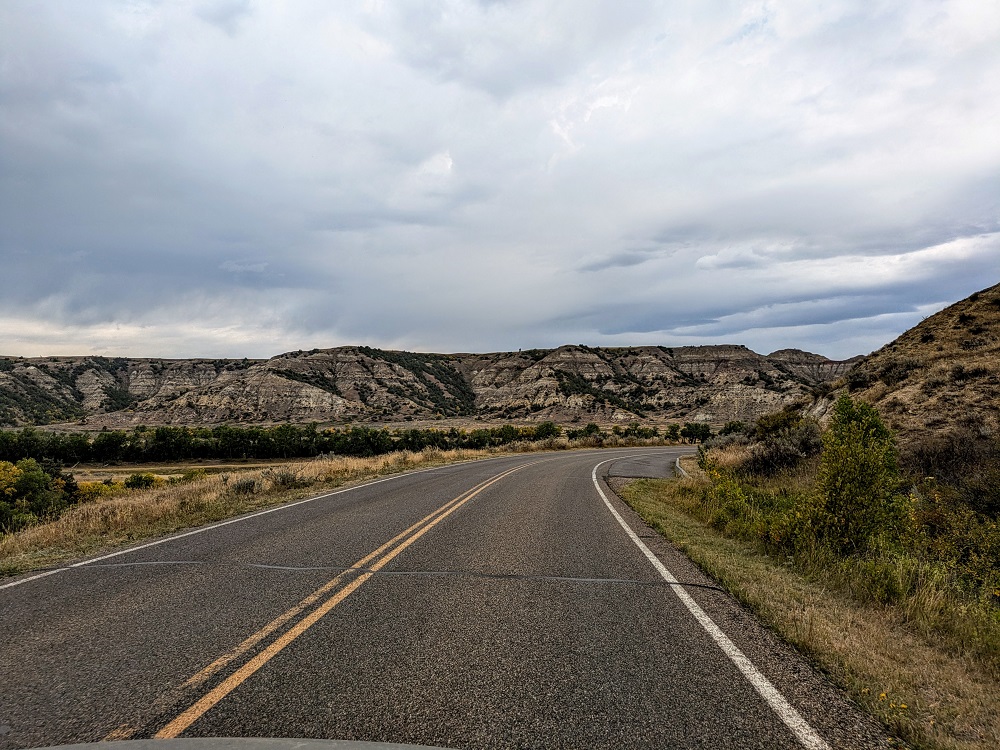
There are several overlooks along the way, with information boards sharing details about what you’re looking at. For example, at Skyline Vista there’s a board explaining that the plateau you can see across the valley used to be part of a plain that was where we were standing. A river subsequently carved away the valley, creating what’s now the Little Missouri Badlands.

The scenic views continue at other overlooks like the Boicourt overlook.

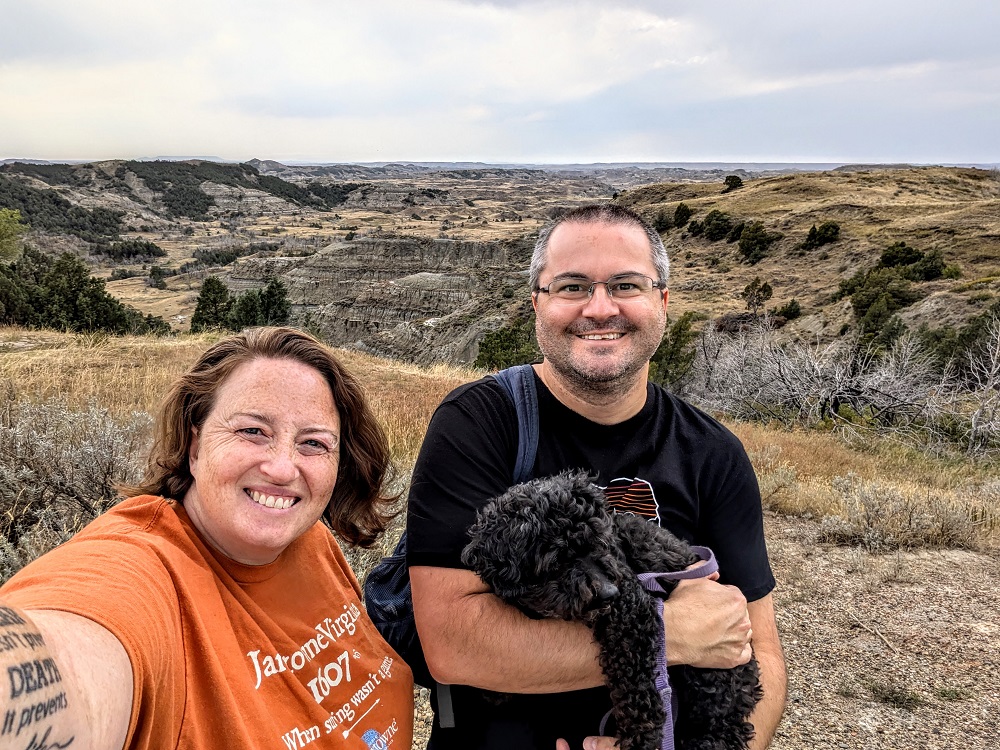
North Unit
We’d highly recommend visiting both the North and South Units at Theodore Roosevelt National Park, but be aware that it’s a bit of a drive between them – about a 90 minute drive.
The badlands scenery continues up in the North Unit.
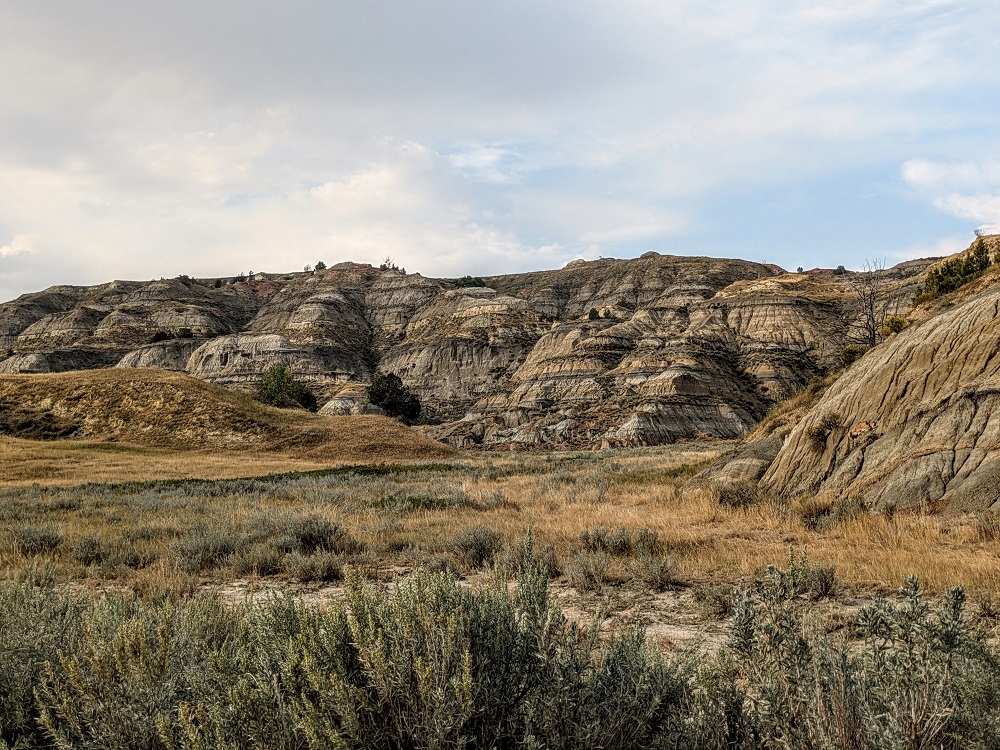
One of the main reasons to visit the North Unit is to see the Cannonball Concretions.
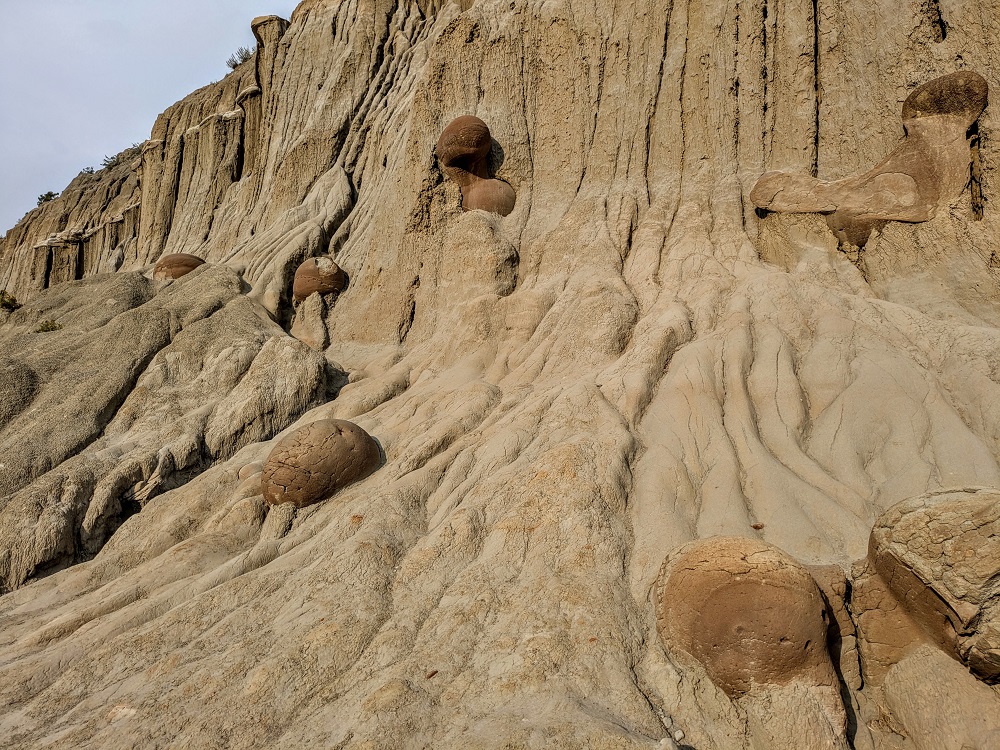
These strange-looking formations can be found throughout the park, but the collection at the Cannonball Concretions Pullout are the most impressive.
An information board at this pullout explained how they’re formed:
Mineral-rich water deposits minerals as it seeps through porous sediment layers. The minerals act like glue, binding the sediments together and forming concretions.
Concretions form in many different shapes and sizes. Those that are spherical are called “cannonballs.” For now, scientists can only guess why some concretions take on such spherical shapes.
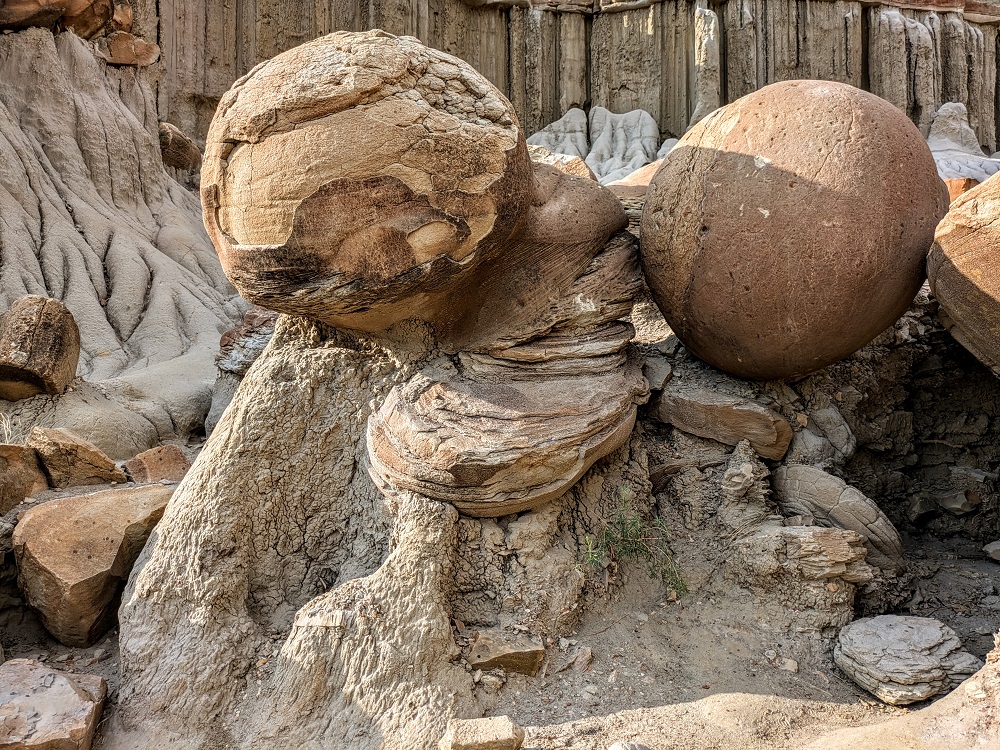
There are some rough trails around the Cannonball Concretions, but be careful not to damage any of these formations.
The landscape is something we’d have expected to see on another planet rather than in North Dakota!
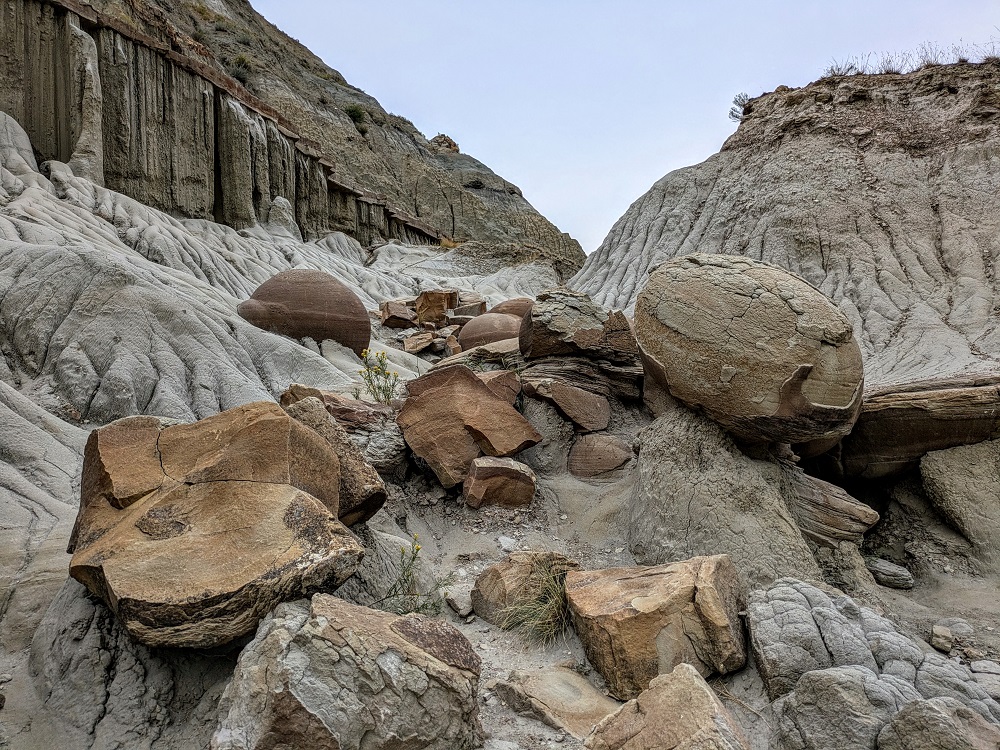
Another reason to visit the North Unit is to experience its beautiful overlooks. My favorite was the River Bend overlook which has a stone shelter that was built in the 1930s by the Civilian Conservation Corps, a program designed to help young men affected by the Great Depression.
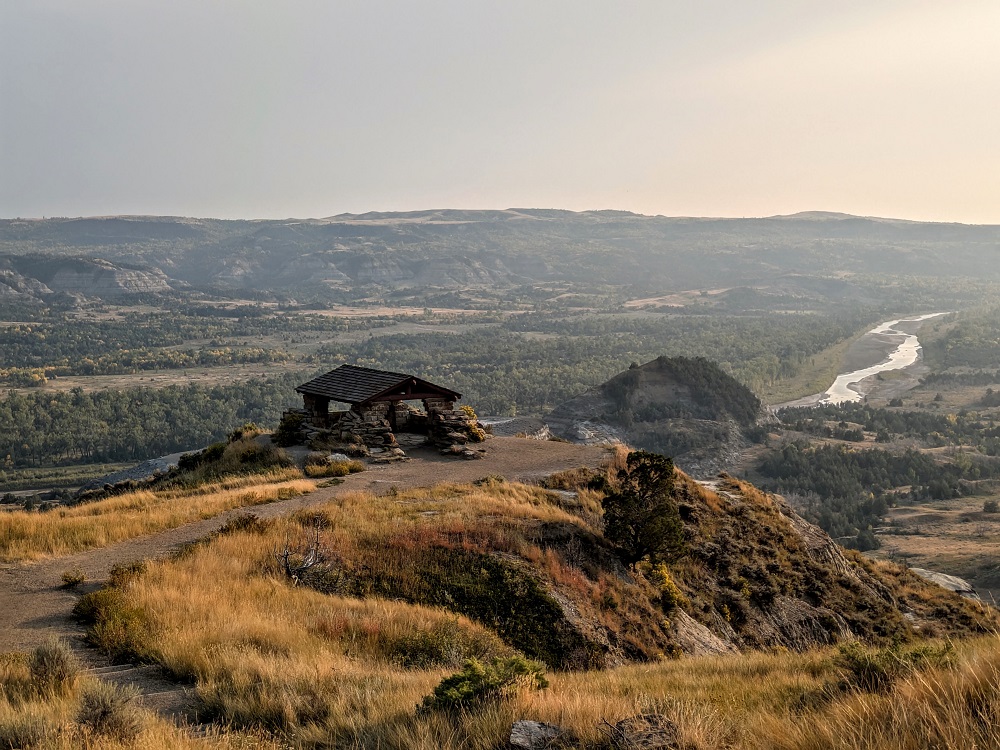
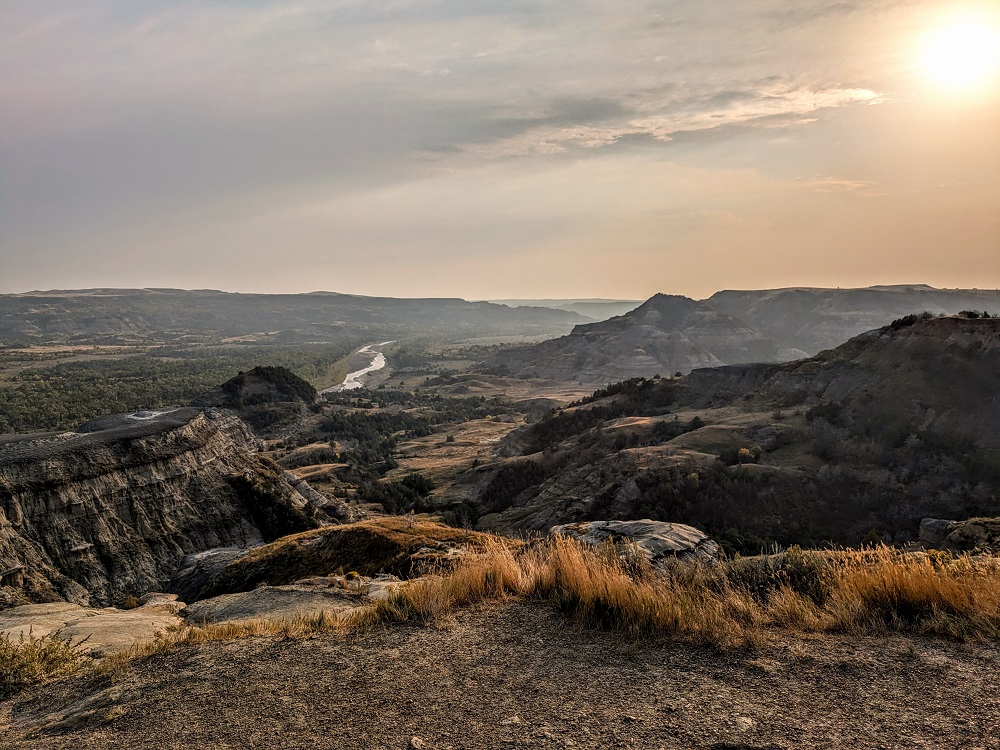
The view from Oxbow Overlook wasn’t too shabby either.

Wildlife In Theodore Roosevelt National Park
In addition to the beautiful scenery, one of the highlights of Theodore Roosevelt National Park is its abundance of wildlife. Early on in the South Unit we stopped at the Prairie Dog Metropolis (yes, it’s really called that!) We’ve seen quite a lot of prairie dogs on our road trip in various locations, but this was one of the largest – if not the largest – prairie dog towns we’ve seen, hence it being called a metropolis.
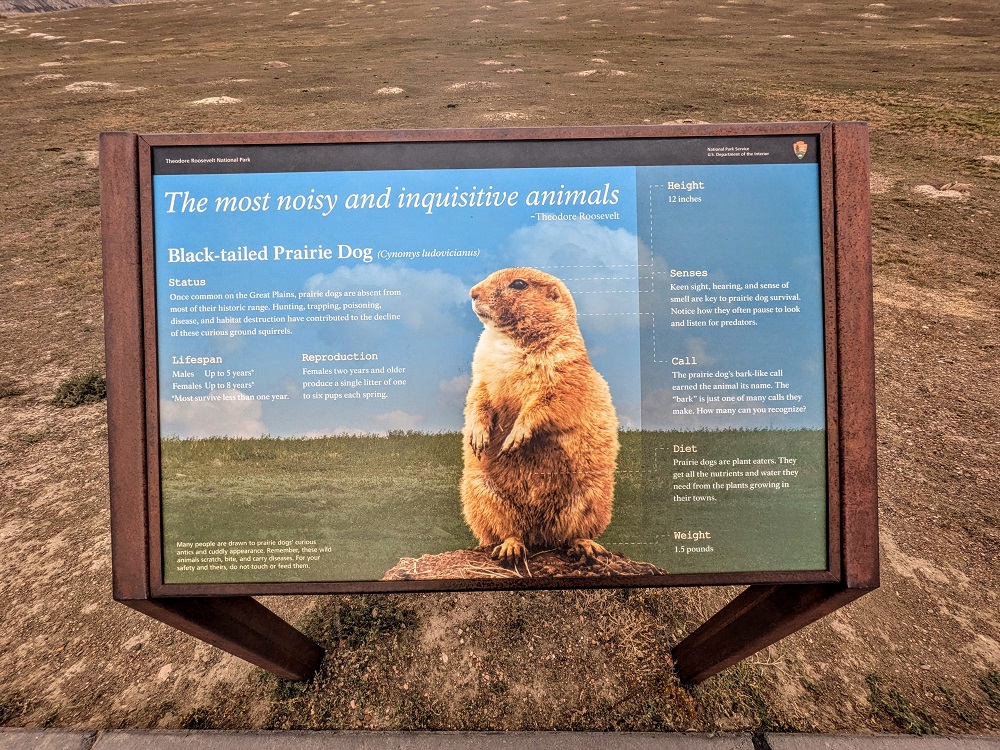

These prairie dogs seemed less skittish to normal, so it was possible to get a little closer to them than normal, but we still kept a reasonable distance.
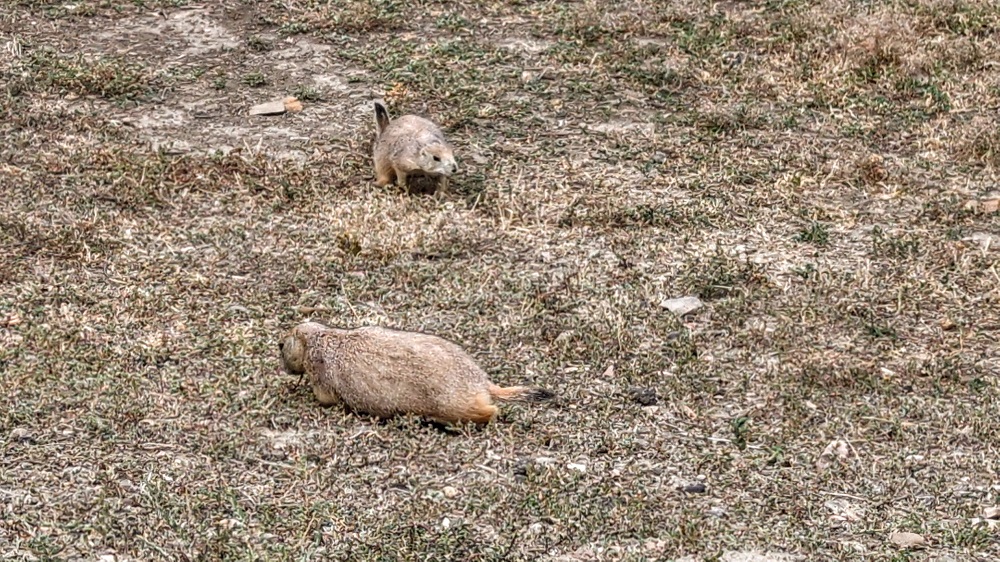
We spotted some kind of bird crossing the road which might’ve been a wild turkey.
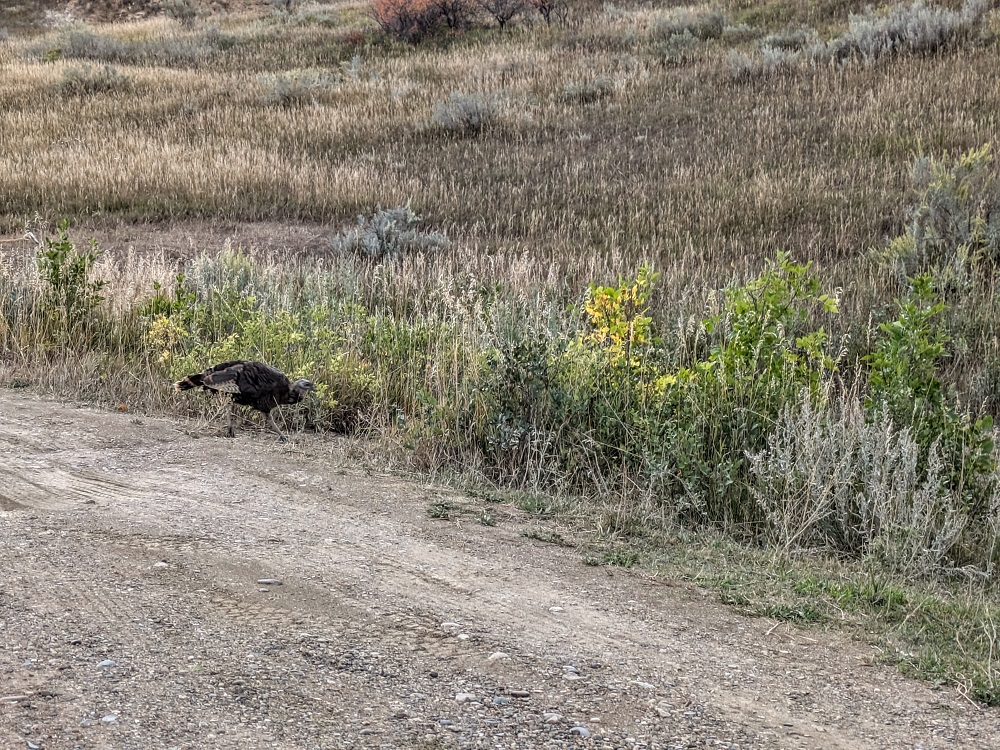
We also spotted deer and longhorn cattle.

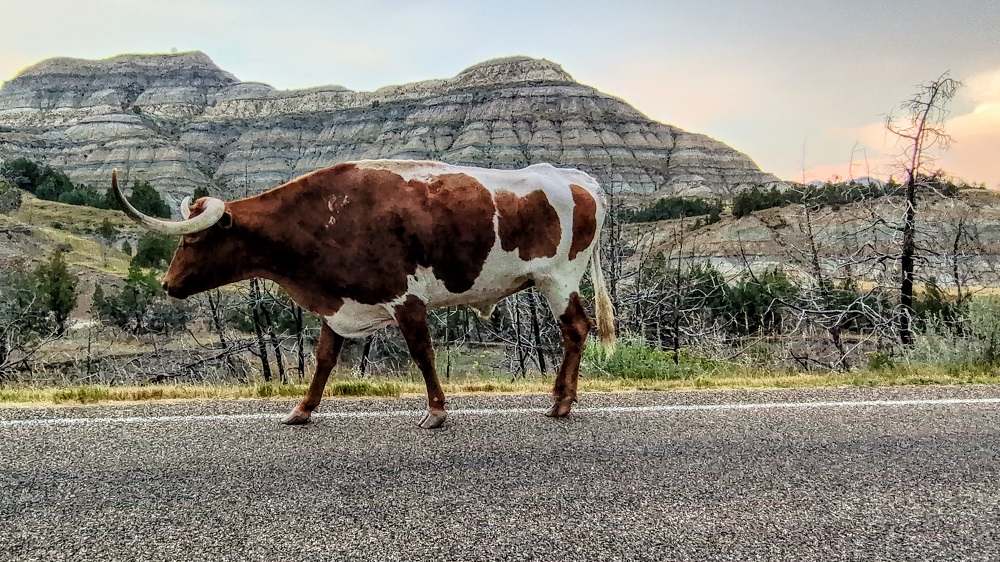
Theodore Roosevelt National Park is home to some free-roaming horses. The park tried to remove them in 1954, but some managed to evade capture. After subsequent efforts to remove them failed, the park decided to let them remain as part of its historical setting.
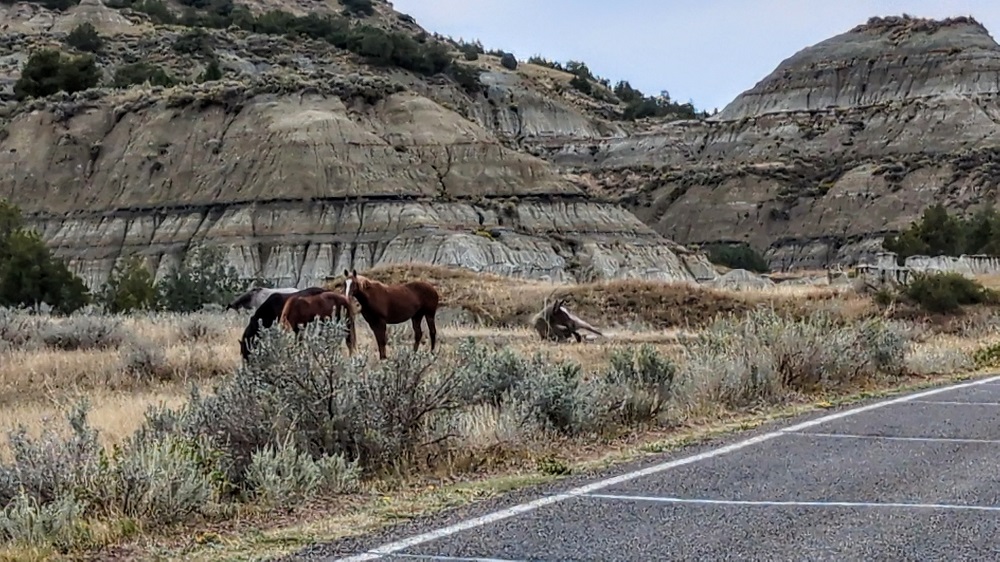
The most exciting wildlife we saw though was bison. So many bison! Roaming the plains, crossing the road and munching their way around the park in both the South and North Units.
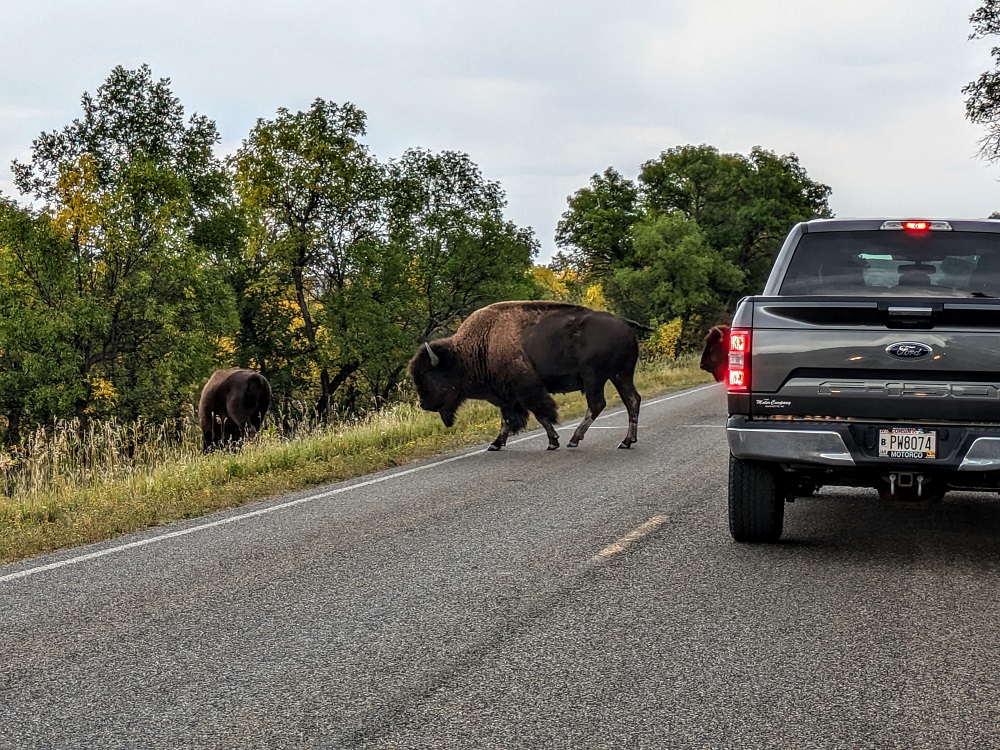

There were even some cute little bison calves.

The best scene we encountered was in the North Unit. About halfway between the North Unit visitor center and the Cannonball Concretions Pullout, we stopped by the side of the road to take a photo of a nearby bison. It was then that we noticed a long chain of bison walking up the badlands in the background.
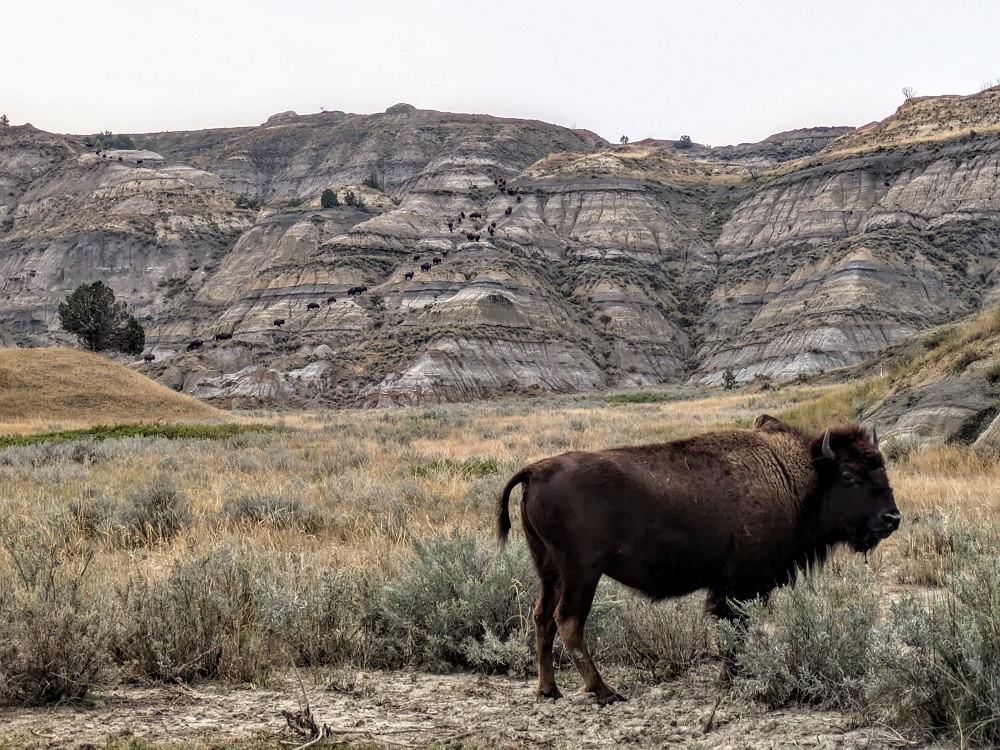
Final Thoughts
Theodore Roosevelt National Park was one of the highlights of our 2.5 weeks in North Dakota. It’s an extremely scenic park with lots of wildlife to complement the views, so it’s well worth a visit.
So great that you guys loved TRNP! The last people we recommended it to weren’t impressed– complained that it was “too brown”! 😂😂😂😂😂
Hahaha! We have a friend who wasn’t interested in visiting Utah because it was just brown rocks.
I love all the wildlife there.
We were surprised at how many critters we saw – we had no clue there’d be so many